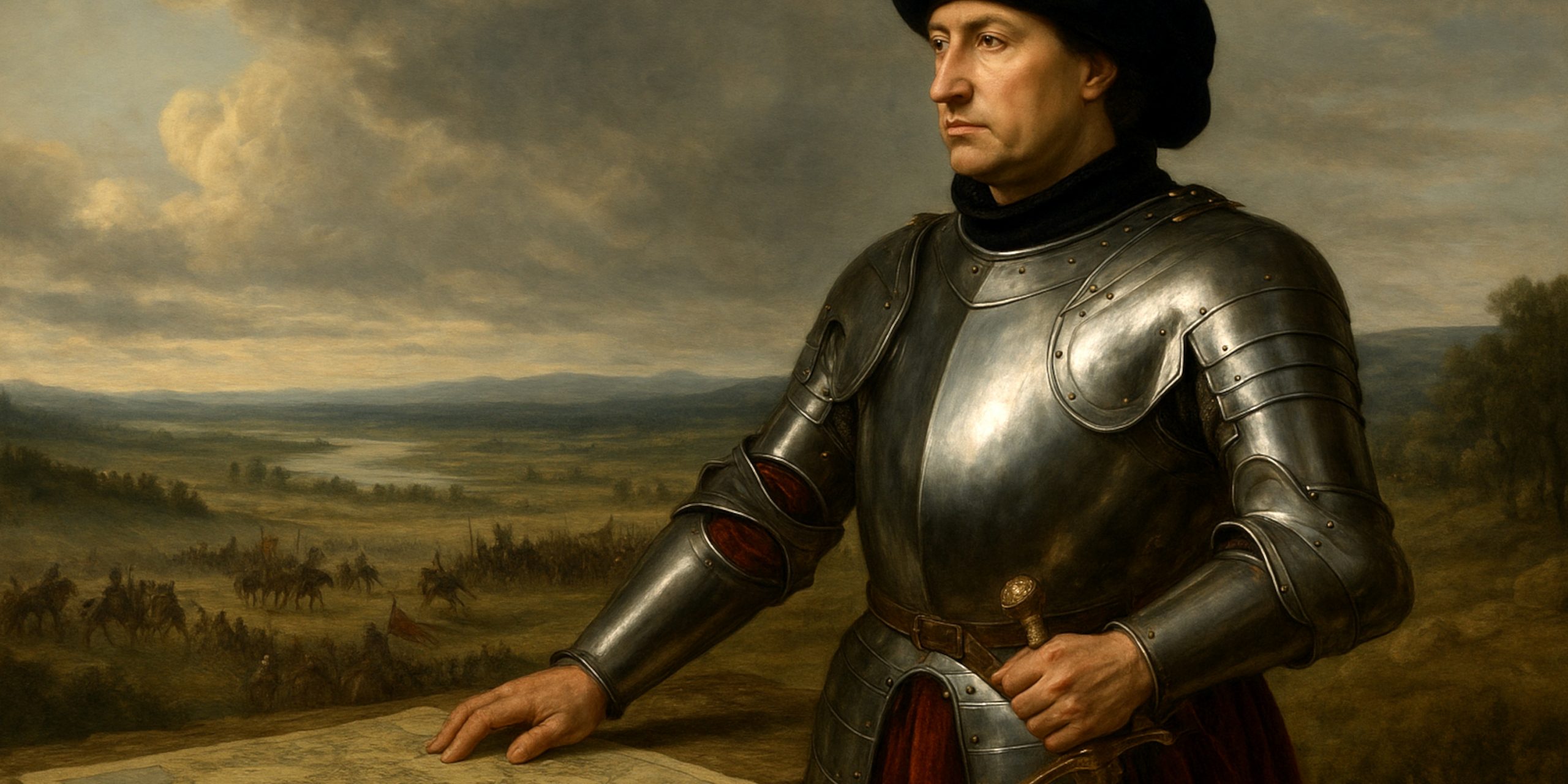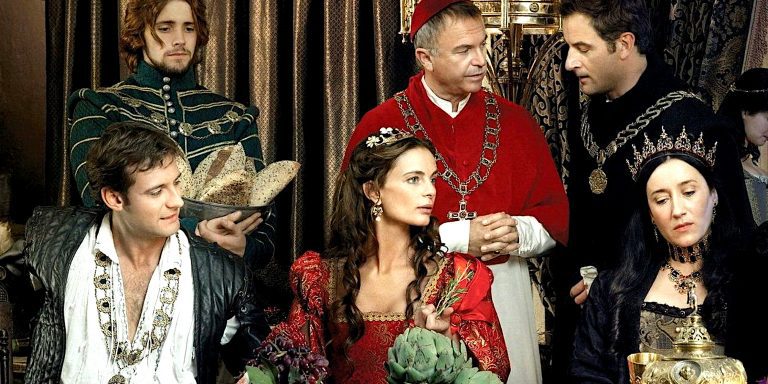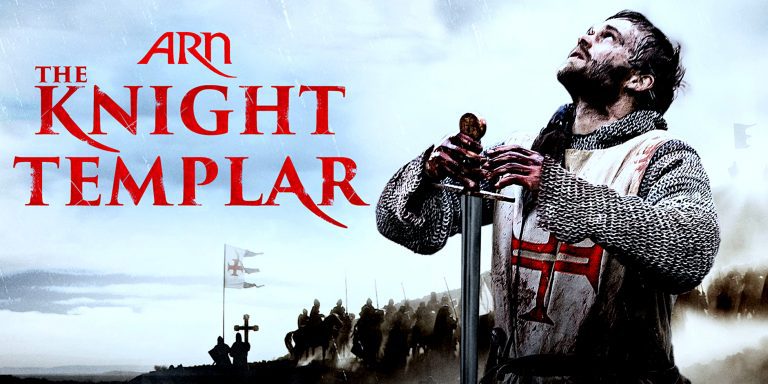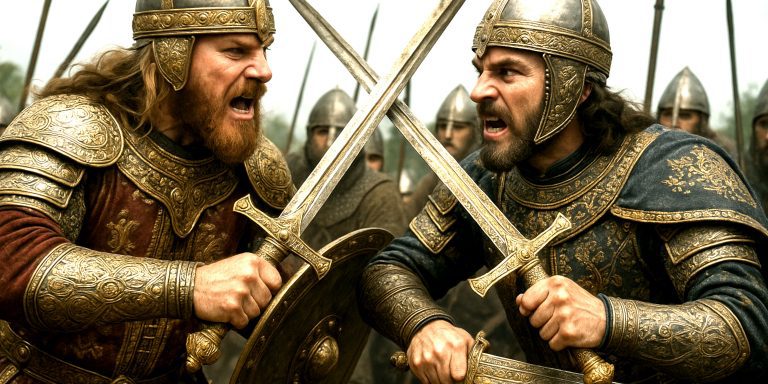
Philip the Good, Duke of Burgundy from 1419 to 1467, was one of the most powerful rulers in 15th-century Europe. His reign extended over a vast territory including modern-day Belgium, the Netherlands, Luxembourg, and large parts of eastern France. Known for his diplomatic cunning, patronage of the arts, and military ambition, Philip’s influence reached deep into the politics and warfare of the late Middle Ages.
Arms and Armour
Philip the Good maintained a well-equipped and elite Burgundian military machine. While no surviving suit of armour can be definitively attributed to him personally, numerous contemporary accounts and visual sources reveal the types of weaponry and martial aesthetics favoured at his court.
Sword Types Common in Burgundian Use Under Philip:
- Oakeshott Type XVIII longswords: Featuring narrow blades and acute points, ideal for thrusting through plate armour. Favoured by knights in full harness during field battles and duels.
- Estocs: Long, rigid thrusting swords without cutting edges, used against heavily armoured foes. Often seen in depictions of knightly combat in the Low Countries.
- Bastard swords (hand-and-a-half swords): Versatile blades suited for both mounted and foot combat, offering flexibility in grip.
- Arming swords (Oakeshott Type XVa): Slim-bladed swords carried by men-at-arms and knights, often as a secondary weapon.
- Ceremonial swords: Lavishly decorated blades used for investitures and rituals, often linked to the Order of the Golden Fleece.
Philip’s founding of the Order of the Golden Fleece in 1430 also gave rise to richly adorned weapons, including presentation swords and armour engraved with the emblem of the fleece. These objects served as both status symbols and political tools, reinforcing loyalty among his vassals and allies.
Burgundian armour during this period showed a blend of German and Italian influences. Fluted Gothic plate and visored sallets were common, paired with cuirasses that bore etched decoration and gilding. Full harnesses for tournaments were developed in parallel to battlefield gear, with ornate shields and crests displayed during pageants and pas d’armes.
Battles and Military Acumen
Philip was not a battlefield general in the traditional sense, but he was a formidable political tactician who used military power when needed and diplomacy when it was more profitable.
Notable Conflicts and Campaigns:
- Siege of Compiègne (1430): Burgundian forces captured Joan of Arc, later handing her over to the English. This event marked a high point in Burgundian-English cooperation.
- Liège Wars (1430s–1460s): Philip conducted multiple campaigns against rebellious towns in the Prince-Bishopric of Liège. These were not just punitive expeditions but efforts to assert control over key trade and ecclesiastical centres.
- Conquest of Luxembourg (1443): Achieved with limited direct combat but significant strategic planning. Philip negotiated and applied pressure until the duchy fell into Burgundian hands.
- Treaty of Arras (1435): Philip formally broke alliance with England and reconciled with Charles VII of France. It marked a turning point in the Hundred Years’ War and strengthened Burgundy’s autonomy.
- Battle of Montenaken (1465): Though led by his son Charles the Bold, Philip’s forces defeated the Liège rebels, underscoring the effectiveness of Burgundian organisation and artillery.
Philip relied on capable commanders, including Antoine de Toulongeon and Jean de Croÿ, and invested in fortifications, artillery, and siege logistics. His armies included heavy cavalry, longbowmen, pikemen, and crossbowmen, drawn from his various domains. He also experimented with early handgunners and field bombards, signalling a shift toward more modern forms of warfare.
Where to See Artefacts
Though few personal items of Philip the Good have survived, artefacts from his reign and court culture can be found across Europe.
Musée des Beaux-Arts de Dijon
Houses the tomb of Philip the Bold and alabaster mourner statues, showcasing the sculptural patronage that continued under Philip the Good. The museum also contains tapestries, illuminated manuscripts, and liturgical objects linked to the Burgundian ducal court.
Musée Archéologique de Dijon
Displays medieval artefacts from Burgundy, including stone carvings, armour fragments, and devotional art. While not directly linked to Philip himself, these pieces reflect the material culture of his era.
Royal Library of Belgium, Brussels
Preserves several illuminated manuscripts commissioned by Philip, including crusading chronicles and works celebrating his lineage and sovereignty.
The Louvre, Paris
Includes Burgundian devotional paintings, reliquaries, and arms from the 15th century, many of which would have been produced under Philip’s patronage or in workshops supported by his court.
Latest Archaeological Findings
Recent excavations in Burgundy and the Low Countries have yielded insights into ducal residences, courtly infrastructure, and burial practices. Work at the Chartreuse de Champmol, the Carthusian monastery founded by Philip’s grandfather, continues to reveal architectural fragments and painted decoration tied to Burgundian ceremonial life.
In Brussels, archival and ground surveys of the Coudenberg Palace – one of Philip’s primary residences, have unearthed remains of banquet halls, decorative floor tiles, and artefacts from courtly feasts. These finds support records of the Burgundian court as a centre of elaborate ritual, feasting, and knightly display.
Legacy
Philip the Good left behind one of the most sophisticated and wealthy courts in Europe. His mixture of chivalric tradition and political realism helped lay the groundwork for the rise of the Habsburgs and the eventual merging of the Burgundian inheritance with the Spanish crown.
He championed a visual and ceremonial culture that influenced European court life for decades. His military strategy favoured consolidation, pressure, and precision over open conquest. He built alliances and expanded borders, not through glory-hunting campaigns, but by reshaping the political geography of northern Europe through force when needed and diplomacy when possible.
Though overshadowed in fame by his son Charles the Bold, Philip’s reign stands out for its calculated ambition, artistic grandeur, and deft balance of war and peace.
Watch the History of the Burgundians documentary:



